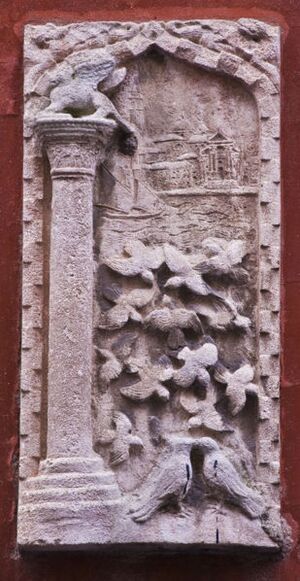Relief
This page contains information about a typical Venetian relief.
Types

Relief sculptures are categorized by the percentage of protrusion from the base structure that the sculpture features. The general distinction that is made, being somewhat subjective, is between high and low reliefs.
Low Relief
A low relief (bas-relief or bassorilievi) is one in which the depth of the sculpture is quite shallow and remains in close proximity to the base of the work. Less than half of the depth of a low relief will be protruding out of the sculpture. Viewed from the side, the image depicted in a low relief is practically indiscernible.
High Relief
A high relief (haut-relief or altorilievi) is a sculpture in which forms project out to half or more than half of the original depth of the piece. As is sometimes the case, high relief sculptures may in fact also include features of low reliefs, with the backgrounds of some works laying close to the surface and displaying fewer intricate three-dimensional details. This is often done to produce the illusion of depth in a work, where images in lower relief are intended to be viewed as further back in the scene.
Patere
A specialized type of relief is known as the patera. Generally small and circular (about 20-80 cm across and 8 cm deep), patere are made most often from slices of marble columns. Patere trace back to Byzantine culture and are recognized as the oldest form of Venetian public art.
See Also
| ||||||||
References
NULL
Bibliography
- 2010 WPI PreserVenice Project Team
- 2008 WPI PreserVenice Project Team
- 2007 WPI PreserVenice Project Team
- 2000 WPI PreserVenice Project Team